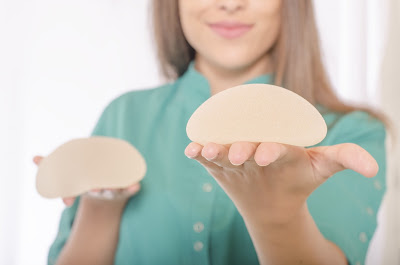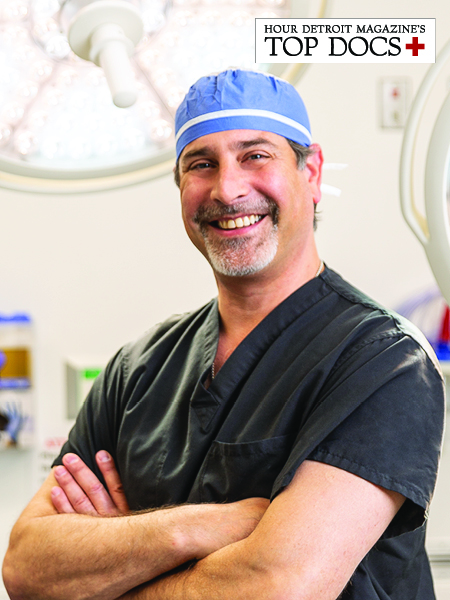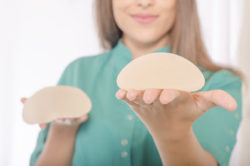The Details on Removing and Replacing Breast Implants
The majority of women who opt for breast augmentation are pleased with the changes they experience.
They feel good about themselves, their clothes fit better, and they have increased confidence.
Even so, there are times when removing and replacing breast implants may be recommended or even needed.
We’ll take a look at the reasons for breast removal and replacement, as well as what goes into the actual procedure.
Reasons for Removing and Replacing Breast Implants
As we said above, most women find that breast augmentation goes the distance in improving their lives.
There are times though where a woman may decide that she’s not satisfied with having implants and may just want them removed.
In other situations, women feel the implant size isn’t right – whether it be too large or too small. Or perhaps they want to switch from saline to silicone for a more realistic feel.
On occasion, breast augmentation complications can arise from the shape, size, texture, or positioning of the original implants.
And sometimes the problem is with the implant itself though. These include malposition, capsular contracture, implant leaking, implant rupture, or rippling of the implant.
In all of these cases, patients would opt for removal and replacement.
The Removal and Replacement Procedure
In order to get to the root of the problem, a board-certified surgeon schedules a consultation with the patient to perform a breast implant revision examination.
He or she then helps the patient determine which type of breast implants will be best. There are many factors that patients should consider when choosing breast implants.
- The Type of Implant
Patients who are unhappy with the results of their breast augmentation surgery may choose a different type of implant to garner better results.
The surgeon will discuss the benefits and risks of each type with the patient.
- The Texture of the Implant
Breast implants are available with smooth surfaces, round shape, or anatomic.
Smooth implants move more freely and are often used to replace textured implants that have rippled.
- The Size of the Implant
It’s not unusual for patients to choose an implant that’s too large then experience the complications that come from too large a breast implant such as over-stretching of the capsule, breast ligaments, and skin envelope.
The surgeon will recommend a size that will most complement your body shape and size to create a proportionate figure.
- The Cohesiveness of the Implant
There is a range of gel cohesiveness- or thickness and stickiness. Patients with capsular contracture may benefit from replacing with a higher cohesive gel.
Incision Options
The surgical procedure for replacing breast implants is essentially the same as the initial breast augmentation surgery.
The patient likely had one of the two common types of types of incisions for breast augmentation: periareolar and inframammary. There may also be a need to tighten the capsule and/or perform a simultaneous lift procedure.
Periareolar
This incision is made along the inferior border of the areola. The surgeon then inserts the implant in the breast pocket. This method offers excellent scar quality which is difficult to see after it heals at the junction between the pigmented areola and breast.
There is little risk of losing nipple sensation because the nerve to the nipple does not come through the skin. Instead, it travels along the ribcage and through the gland to the nipple. Breastfeeding should not be interrupted with any incision choice.
Inframammary
With this incision, the cut is made along the inframammary fold – which is the crease of skin underneath the breast. There is very little risk of losing nipple sensation with an inframammary incision.
In the case of both of these incision types, the surgeon will typically reuse the incision to remove and replace the implant.
Recovery after Removing and Replacing Breast Implants
To ensure no complications arise, patients are typically seen by the surgeon the day after the surgery.
Rest will be needed for 2-3 days following surgery. Then be prepared to take 3-5 days off from work and avoid any strenuous activity for 2-4 weeks.
Are You a Candidate for Breast Implant Removal and Replacement?
If you’re experiencing problems or just feel dissatisfied with your implants, contact us today.
It’s time to set up a consultation with one of our board-certified plastic surgeons to discuss your options for removing and replacing breast implants.
We’ll help you find comfort and restore your confidence.
Breast Implant Placement Options
Breast Implant Placement Options
Your breast implant placement will directly affect the final aesthetic results of your breast augmentation procedure. The board-certified breast surgeons at Star Plastic Surgery have found that submuscular placement is ideal for most of our patients. We understand that there is not a single solution for every body type, however, and will work closely with you to help you find the breast implant placement option that is most ideal for your needs.
Subglandular Breast Implant Placement
Subglandular placement means that the breast implants are placed just below your breast tissue, above the muscles in your chest. The primary advantage of this placement option is a shorter surgery. The disadvantages of subglandular placement include:
- Less aesthetically pleasing
- A more obviously enhanced appearance
- Not suitable for women with small breasts or low amounts of breast tissue
- May impede flow of breast milk
- May interfere with mammograms
Submuscular Breast Implant Placement
Submuscular breast implants are placed below the muscles in your chest. Some surgeons choose to place implants under one or two layers of muscle, but at Star Plastic Surgery, we have found placing the breast implant under three layers provides the best results. Deeper placement greatly reduces complications like capsular contracture, mammogram interference, and will not interfere with breastfeeding.
Additionally, this placement hides the breast implant under the muscles in your chest, reducing any evidence of breast augmentation, and providing you with a natural, aesthetically superior result.
The primary drawback to submuscular implant placement is a more involved surgical procedure. However, we have found that the benefits of this placement option far outweigh the slight inconvenience of additional surgical time.
At Star Plastic Surgery, we offer the Star Plastic Surgery Advantage. All of our breast augmentation surgeons are board-certified, use only proven surgical techniques, and are entirely devoted to the satisfaction of our patients. Our breast augmentation procedures are performed in accredited hospitals with highly trained staff, and our doctors are involved in your procedure from your initial consultation to your full recovery.
If you are considering breast augmentation contact us to schedule a free consultation to discuss the right breast implant placement for you with our experienced plastic surgeons.
Breast Implant Removal & Replacement
Breast Implant Removal & Replacement
There are a variety of reasons for removing and replacing breast implants, including switching from saline to silicone implants for a more realistic feel, replacing a ruptured implant, re-sizing the implants, relocating implants, or changes in weight that make the implant unnecessary. Our board certified surgeons will work to correct these issues to provide beautiful, natural-looking results.
Who is a Candidate for Breast Implant Removal & Replacement
The Breast Implant Removal & Replacement Procedure
Breast Implant Removal & Replacement Recovery
Contact Us
Breast Lift
Breast Lift
Weight gain and loss, pregnancy, age, and even genetics play a role in the appearance of your chest. At Star Plastic Surgery, our board certified breast surgeons understand how sagging breasts can negatively impact your self-confidence. Through breast lift surgery, we can help you restore that confidence, expand clothing options, and achieve the look you desire to feel comfortable and appealing.
Who is a Candidate for a Breast Lift?
Incision Options
Breast Lift Recovery
Contact Us
Breast Procedures
Breast Procedures

At Star Plastic Surgery, we want you to feel great about the way you look. If you feel self-conscious about your breasts, or if you need a boost in your self-confidence, our board-certified breast surgeons offer a full range of breast procedure options to help you look and feel your best. We understand that it’s not about how others see you; it’s about how you feel about yourself.
Our Breast Procedures
Breast Augmentation – By far the most popular breast procedure, breast augmentation surgery is a great way to tastefully enhance both the size and shape of your bust line. Whether you choose saline or silicone breast implants, breast augmentation surgery can help your body fit better into the type of clothes you want to wear. Our plastic surgeons will work with you to determine the best breast procedure for your body and your goals.
Breast Lift – If you want your bust line to reflect the youth and vitality you feel inside, breast lift surgery can reverse the effects of gravity, aging, and pregnancy. Don’t let your breasts affect your self-confidence or make you feel insecure about your age. Because your breasts also lose volume as you mature, you may even want to combine your breast lift surgery with breast augmentation.
Breast Reduction – Having overly large breasts can affect both your emotional and physical health. Large breasts can make you feel self-conscious, as well as causing pain and discomfort. Breast reduction surgery simply removes excess fat, tissue, and skin from your breasts to give you a bust that is attractive and proportional with the rest of your body. With breast reduction surgery, you can feel relief from the self-consciousness, pain, and discomfort of having overly large breasts. If your breasts are getting in the way of your active lifestyle, causing back and shoulder pain, or simply make you feel uncomfortable and self-conscious, talk to our board-certified plastic surgeons about breast reduction surgery.
Male Breast Reduction – The board-certified plastic surgeons of Star Plastic Surgery also provide male breast reduction surgery for men affected by gynecomastia.
Breast Implant Removal & Replacement – There are a variety of reasons for removing and replacing breast implants, including switching from saline to silicone implants for a more realistic feel, replacing a ruptured implant, re-sizing the implants, relocating implants, or changes in weight that make the implant unecessary.
To learn more about your breast procedure options, contact us today to discuss your needs with the experienced plastic surgeons at Star Plastic Surgery.
Are You Suffering with Breast Asymmetry?
Anxiety. Embarrassment. Depression. These are just some of the words that women who come see me use to describe how they feel about their breast asymmetry.
Size discrepancy between your breasts can be frustrating for many women. This is called breast asymmetry. Breast asymmetry is defined as a difference of form, position or volume of the breast, and it affects more than half of all women, so your daughter shouldn’t feel alone. In fact, one study of 100 women who wanted breast augmentation with implants found that 88% had natural asymmetries. You should know first and foremost that every woman’s breasts have a certain degree of asymmetry, but for some women the size difference between the breasts may be more severe. In cases in which the size difference between the left and right breast is larger than what is acceptable, it can be quite a challenge to find a bra that fits well. In fact, it might be impossible to find a good fitting bra, bikini or bathing suit.
These pieces of clothing will either be too big or too small on one side. It’s not only finding the right sized bra that can be difficult for women with breast asymmetry. It can also be a cause for anxiety on a daily basis. For some women this problem can make someone so self conscious. Women who have been living with breast asymmetry for years are ready for a solution.
Surgical correction for breast asymmetry allows for an easy correction to the asymmetry and a solution for the patient’s psychological distress. Our team of board certified plastic surgeons at Star Plastic Surgery in Novi, Michigan are all highly skilled at correcting breast asymmetry. This can be achieved by a single procedure or a combination of procedures at one time or over a period of time.
Breast Enlargement on one side or both sides using different size implants, different fills, and different styles (high, moderate plus or moderate profiles) help correct volume differences between the breasts as well as projection differences that are due either to the breast itself or due to chest wall asymmetries or a combination of factors. Breast size asymmetries due to volume are the most common form of asymmetries of the breast.
Breast Lift is used to reposition the breast when one breast is lower than the other and reduces the amount of skin surrounding the breasts. Reducing skin either surgically or non-surgically corrects the differences between breasts that are due to breast position or skin. Breast reduction reduces the volume and skin on one or both breasts to make another option for women when the amount of skin and volume plays a role in the asymmetry. Non-surgical tightening of the skin using heat may also be an option for patients when they are seeking a non-surgical solution to skin issues. Liposuction to the breast is another method to reduce volume without scars.
If you suffer from breast asymmetry or “bottoming out” of your breasts, do not hesitate to schedule a free consultation with me or any of the other board certified plastic surgeons at Star Plastic Surgery in Novi, Michigan.

Breastfeeding With Implants: Can You Still Do It?

Tailoring Plastic Surgery to Different Age Groups
Just as not all plastic surgery procedures are created equal, not all patients are created equal either. Each person has a unique set of traits and characteristics.
One of the biggest considerations is the age of the patient. A patient in her 20s is going to have different needs than one that’s in his 60s.
As such, doctors are always tailoring plastic surgery to different age groups to achieve optimal outcomes. We’ll look at some of those different considerations based on specific age groups.
Teens/Young Adults
Teens and young adults (those in their 20s and 30s) are very prone to social media influences. As such, they may come to a surgeon with unrealistic expectations.
What they fail to grasp at this age is that plastic surgery is not meant to be some sweeping miracle cure to whatever is ailing you about your appearance. So one of the most critical responsibilities with young patients is educating them about the long-term aspects of a procedure.
Facial contouring is in high demand among young adults. So surgeons need for them to understand how their ongoing physical and psychological development could be impacted. And there are simply some procedures that are not appropriate for teens and young adults.
The vast majority of teenagers should only be considered for cosmetic or minimally invasive procedures rather than surgery. Many of these procedures are not even available to them. Breast augmentation, for example, requires a patient to be over the age of 18.
Yet even young adults over 18, both men and women, who are seeking breast procedures need to understand the potential future implications of such a procedure. Many life changes happen during these years, including pregnancy.
Middle Age
The latest statistics from ASPS show that patients in their middle years are the most likely to seek out plastic surgery. Unlike their younger counterparts and having lived longer, they’re typically more realistic in their expectations. Although there will always be occasions where patients falsely regard plastic surgery as akin to the fountain of youth.
Patients in their 40s and 50s begin to see structural changes in the face. In addition, they’re beginning to lose skin elasticity. By this stage of their lives, they’ve established an identity that they may feel is fading. So rather than seeking augmentation, most people in middle age want procedures that are more restorative in nature. Facelifts and eyelid surgery are among the more popular.
Another consideration with middle age are health complications that are not as present in young adults. These will impact not only the procedure, but the recovery. So all of this must be considered when creating a surgical plan.
Senior Patients
As patients age into their 60s and beyond, the chances for complications increase. The effects of gravity and skin laxity can render certain procedures difficult or even impossible. The return on investment may not be worth it.
In addition, medication interactions and overall health need also to be heavily considered. As such, many plastic surgeons will recommend nonsurgical options first to address desired changes. If these are not adequate, then it becomes about striking the right balance between surgical and nonsurgical options based on the patient’s particular needs.
Considerations Across the Board
Yes, there are definite differences that come into play when working with specific age groups. For instance, younger patients will heal faster than older patients. But they are also prone to more pronounced scarring. So recovery plans must be customized to consider any age-related factors.
Regardless of a patient’s age, a truly professional plastic surgeon will always focus on ethical considerations. As such, they make every effort to stress the importance of the individual over societal pressures.
It’s the surgeon’s job to educate the patient on every possible alternative and discuss the impact the procedure(s) will have on him/her/them physically, psychologically, and socially. Any surgeon not doing this should be avoided.
Tailoring Plastic Surgery to Different Age Groups
The importance of tailoring plastic surgery to different age groups can’t be overemphasized. Steer clear of any doctor, clinic, or facility that will perform procedures without first covering all the bases.
If you’re ready to begin your journey, contact us to get started.
During your free consultation, our board-certified plastic surgeons will advise you on best practices and discuss your options. Then you can go forward with confidence – no matter what your age.
Best Cosmetic Surgeon Near Me
HOUR Detroit Magazine’s TOP DOCS Award Winner, Dr. Elan Reisin, M.D. FACS
 Elan Reisin, M.D. FACS is certified by the American Board of Plastic Surgery and is a member of the American Society of Plastic Surgeons (ASPS). He belongs to many medical organizations and associations. Dr. Elan Reisin is a published medical authority on breast surgery. The most recently published textbook, Surgery of the Breast, authored by Dr. Reisin’s mentor, Scott L. Spear, M.D., includes Dr. Reisin’s co-authored chapter on breast augmentation.
Elan Reisin, M.D. FACS is certified by the American Board of Plastic Surgery and is a member of the American Society of Plastic Surgeons (ASPS). He belongs to many medical organizations and associations. Dr. Elan Reisin is a published medical authority on breast surgery. The most recently published textbook, Surgery of the Breast, authored by Dr. Reisin’s mentor, Scott L. Spear, M.D., includes Dr. Reisin’s co-authored chapter on breast augmentation.
From HOUR DETROIT:
Elan Reisin MD, FACS, Medical Director at Star Plastic Surgery in Novi, Michigan, is a multi-year Hour Detroit‘s TOP DOC OF THE YEAR winner. Dr. Reisin is Board Certified in Plastic and Reconstructive surgery and has received numerous national awards. After five years of being an attending physician teaching surgical residents at the prestigious Georgetown University Hospital Department of Plastic Surgery, Dr. Reisin decided to create Star Plastic Surgery, a preeminent state of the art AAAHC surgical center and medical spa in Novi, Michigan. He has completed over 20,000 procedures.
Dr. Reisin has traveled internationally to learn from top plastic surgeons throughout the world and has also given back through philanthropic trips to the Dominican Republic to treat children with congenital and traumatic deformities.
What’s the Best Nutrition Before and After Plastic Surgery?
Despite the relative ease with which so much plastic surgery is now performed, it’s important to remember that, yes, it IS still surgery.
How you care for yourself pre- and post-op matters. That also means paying attention to nutrition before and after plastic surgery.
So if you’re planning to have a procedure and are a fast food junkie with a penchant for salt, sugar, and fat, you’ll need to prepare to make some adjustments.
Getting Proper Nutrition Before and After Plastic Surgery
Paying attention to what you eat during this time is crucial. Choosing healthy foods will make a big difference in the success of your procedure as well as how quickly you recover.
There are certain foods before and after plastic surgery that you’ll want to include in your diet, and others you’re better off avoiding.
Preparing For Your Surgery
It’s important to start prepping your body for surgery by avoiding foods that cause inflammation. Your body will be providing enough of that on its own as a natural reaction to the surgery. And this is normal.
Too much inflammation, however, is going to slow down or even halt healing. So it’s best to go into the procedure with as little inflammation as possible. Alcohol and sugary foods are two of the biggest offenders.
You also want to avoid foods that are high in sodium so you can regulate your blood pressure and reduce bloating. That means reading labels for sodium content and ditching the obviously salty snacks for a bit.
- Choose Fruits, Veggies and Whole Grains
Fresh fruits and veggies are always a sure bet. Fruits like apples, oranges, and bananas, and veggies such as carrots, broccoli, and even lettuce are low in sodium, contain only natural sugars, and are loaded with vitamins and nutrients.
Whole grains are also highly recommended. Just be sure that if you’re getting them through bread, you check the sodium content. Some breads are high in sodium.
- Add In Smart Protein Choices
In addition, protein is key. To avoid the risk of increased bleeding during and after surgery, steer clear of red meat and stick with lean pork, chicken, or fish. Unsalted nuts and beans as well as eggs are also excellent sources.
You can also get protein from dairy products. Again, read the labels. You’ll need to stick with low-sodium and low-fat cheeses, milk, and yogurt.
After the Procedure…
Hopefully once you get used to a healthy and nutritious regimen before your procedure, you keep it up while you’re healing (and beyond!). As you heal, continue to avoid sugar, alcohol, and high-sodium foods.
Sticking with low-sodium and lean whole foods is going to help the body heal faster. Since vitamins and supplements are often discouraged post-op, it’s important you keep getting nutrients through natural sources. And just as protein is important before surgery, it’s essential during recovery. After all, it’s the main building block for new tissue.
Another consideration after surgery is any foods that will benefit your gut health. First, ensure that you’re keeping up with a high fiber diet to keep things moving in the intestinal department. Anesthesia can wreak havoc on regularity.
Also, because you’ll likely to be on a course of antibiotics, supplement with probiotics like miso and fermented foods, as well as prebiotics such as onions and garlic. These will infuse the good bacteria that gets eliminated with those antibiotics.
Finally, stay hydrated!!!!! Drinking plenty of water will keep inflammation and bloating down while aiding in slow digestion.
Are You Ready to Commit to Your Procedure?
Whether you’re looking to get a tummy tuck, eyebrow lift, or breast augmentation, attending to proper nutrition before and after plastic surgery is key.
So if you’re ready to take the next step, contact us today to set up your free consultation.
And start feeling better about yourself both inside and out!
















